Here's how to learn New Testament Ancient Greek:
First, learn pronunciation. Then just start reading out loud. Learn a little grammar along the way. But just read out loud a ton. Lots of repetition. Yawtl is designed to support this straightforward approach to gaining fluency in New Testament Ancient Greek.
Free Plan
- ✔ Reader - Only John 1
- ✔ Vocab - Only John 1
- ✔ Practice - Only John 1
- ✔ Pronunciation Tool
- ✔ Verb Explorer Tool
- ✔ Noun Explorer Tool
Paid Plan
- ✔ Reader - All Chapters
- ✔ Vocab - All Chapters
- ✔ Practice - All Chapters
- ✔ Pronunciation Tool
- ✔ Verb Explorer Tool
- ✔ Noun Explorer Tool
Pronunciation Tool
The pronunciation tool lets you gradually add new sounds to your repertoire. Choose the sounds you want to practice, and you'll see common words that use ONLY those sounds. Press play to listen to the word. Practice until you're comfortable. Then add another sound. Choose a "must have" sound to further filter the words to only words that also contain that sound.
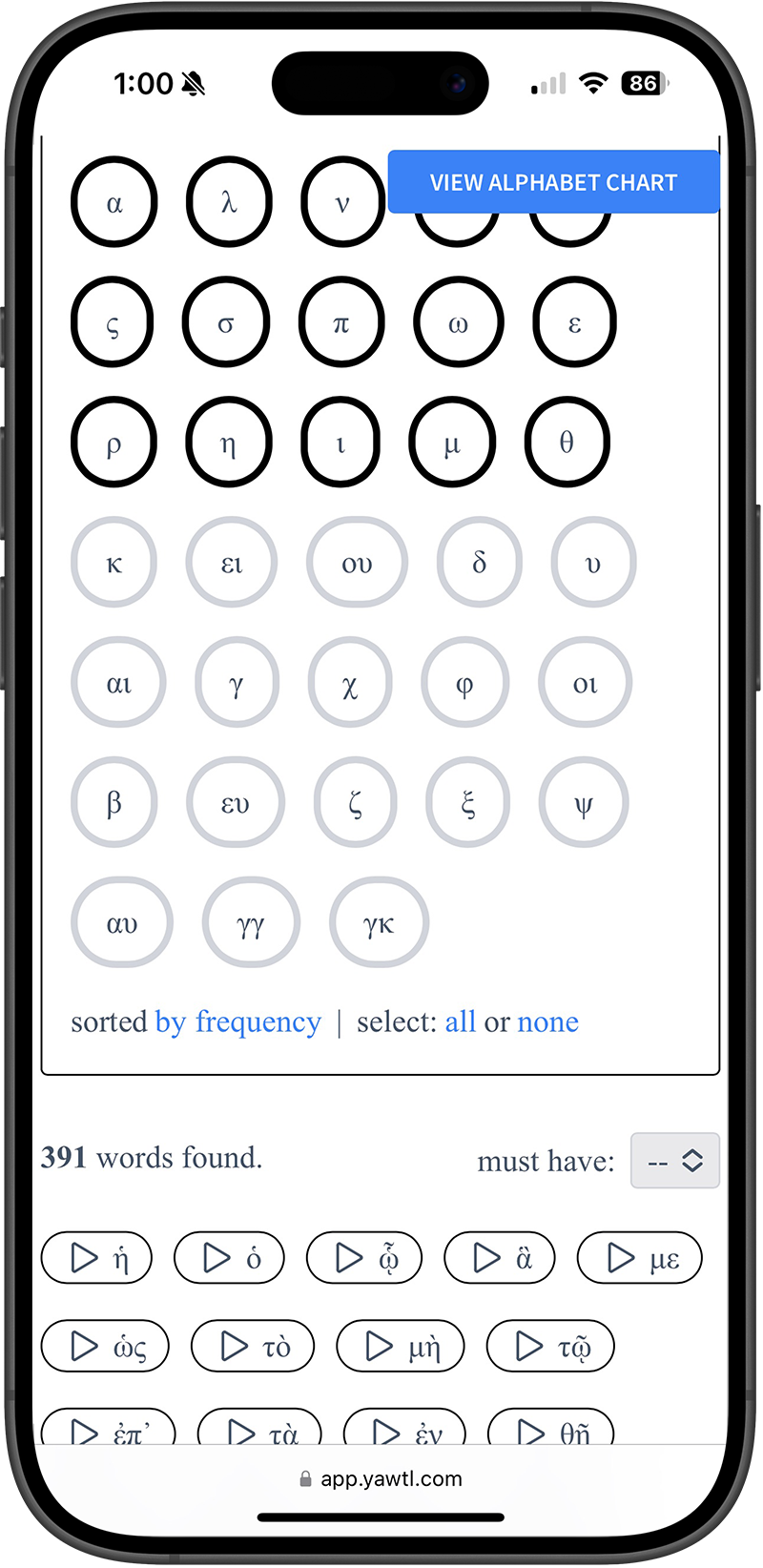
Select Phrases and Press Play
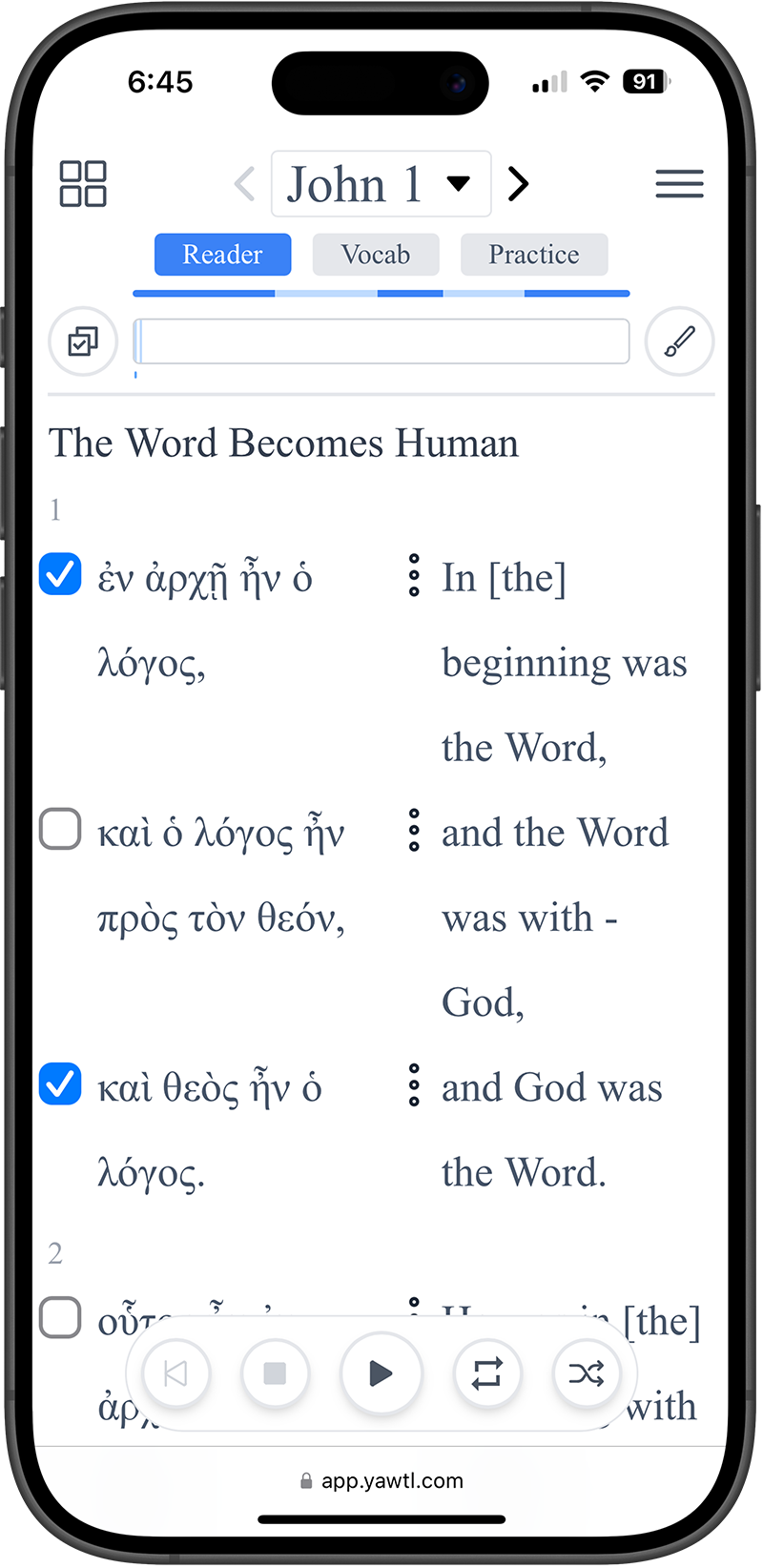
Playlist Options
You have some options when playing your playlist.
- You can listen in Greek only. Or you can listen to the Greek and the English.
- You can adjust the time between phrases. Give yourself up to 9 seconds to digest a new or difficult phrase. Or set the interval to 0 seconds to move quickly through phrases you are pretty familiar with.
- You can set how many times a phrase repeats before moving on to the next phrase.
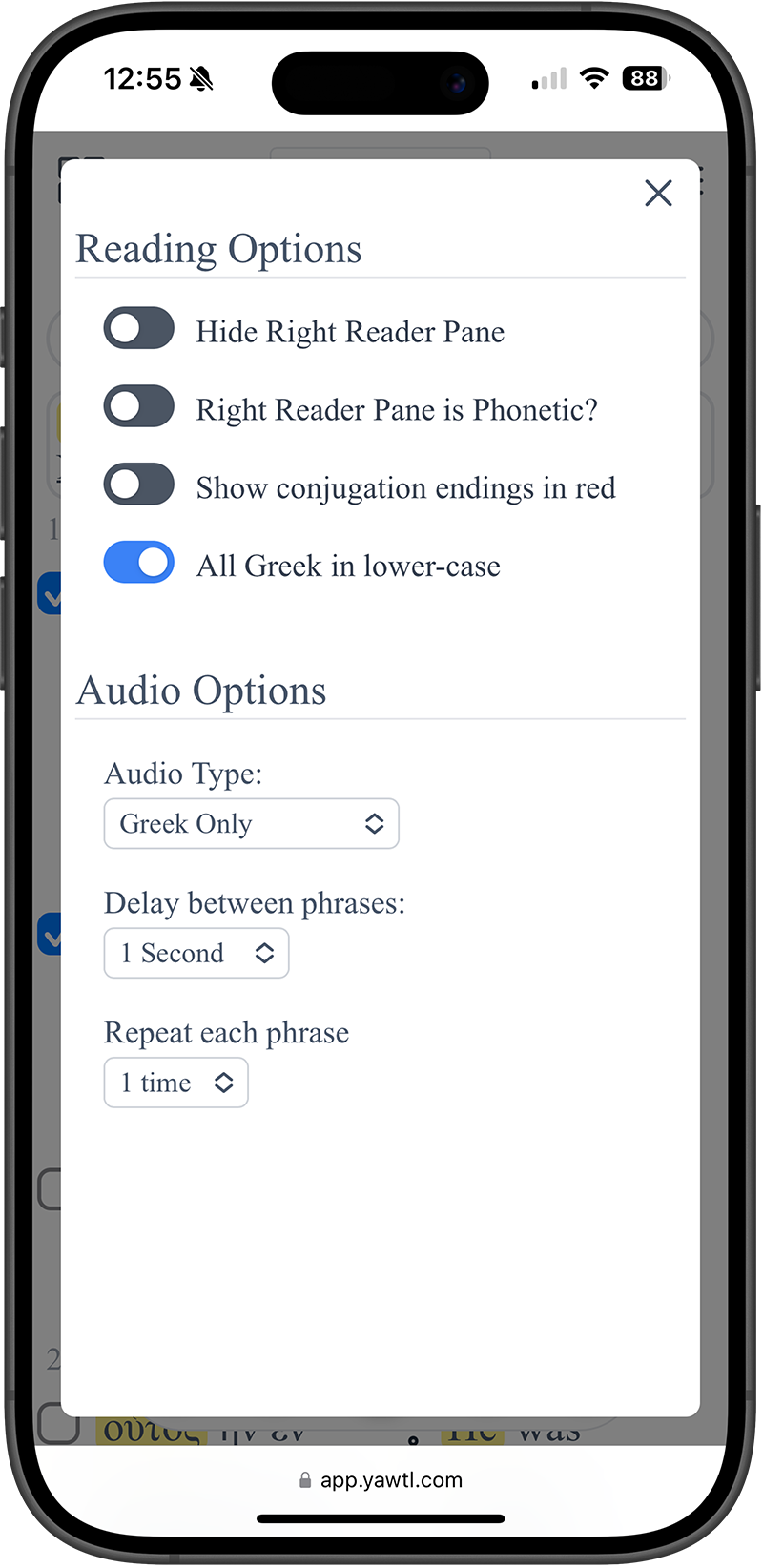
Play a Single Phrase or Set as Favorite
In addition to playing a playlist, you can also just play a single ad-hoc phrase at any time. Just use the three-dots phrase menu to reveal the "play once" button.
You can also "favorite" the phrase so it's easy to reference later.
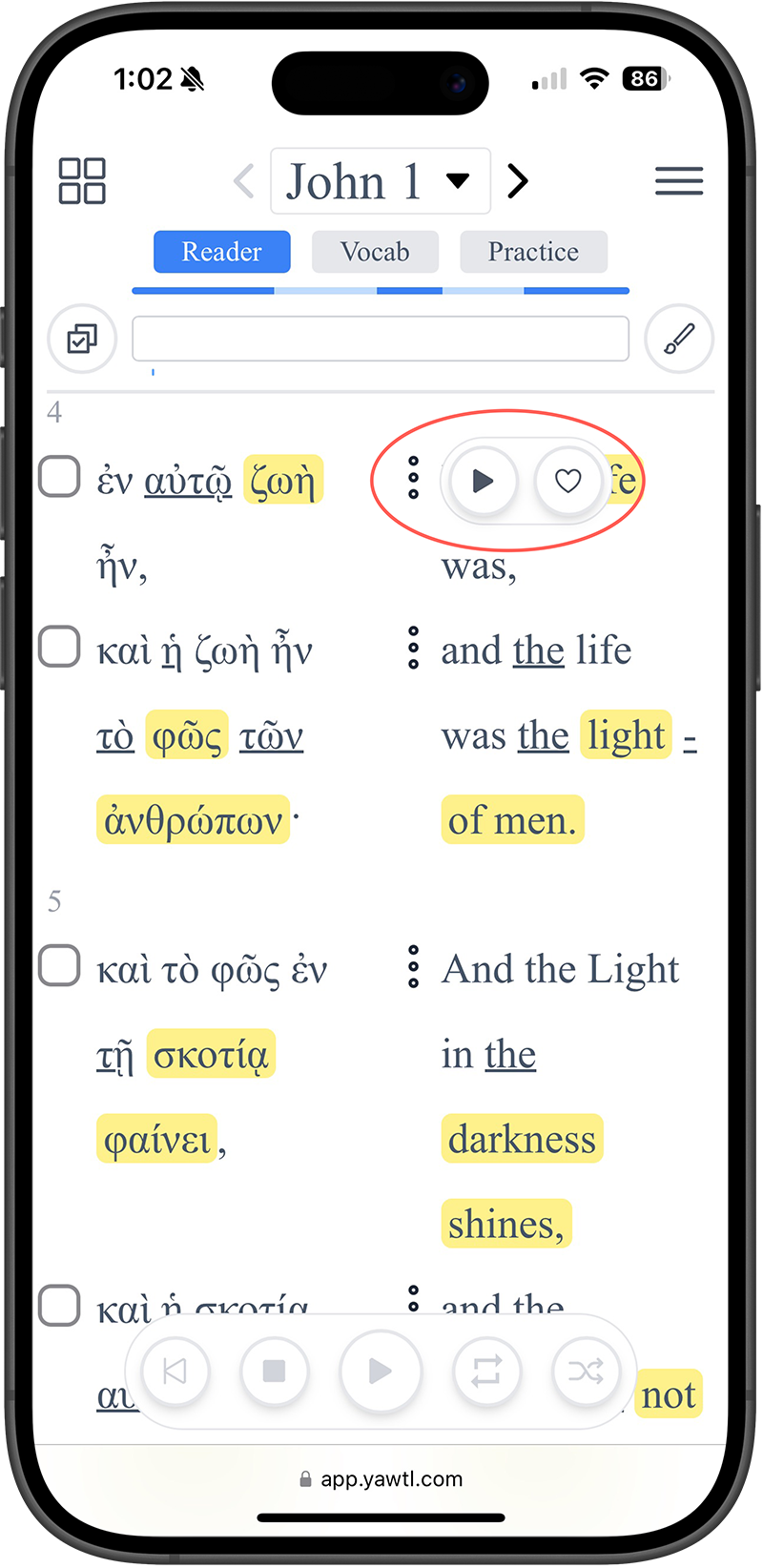
Multi-Select w/ the Bulk Checker
Use the bulk-checker to quickly build or modify a playlist. Use the slider to specify the range of phrases you want to restrict the playlist to. Then select the type of phrases you want to include to within that range.
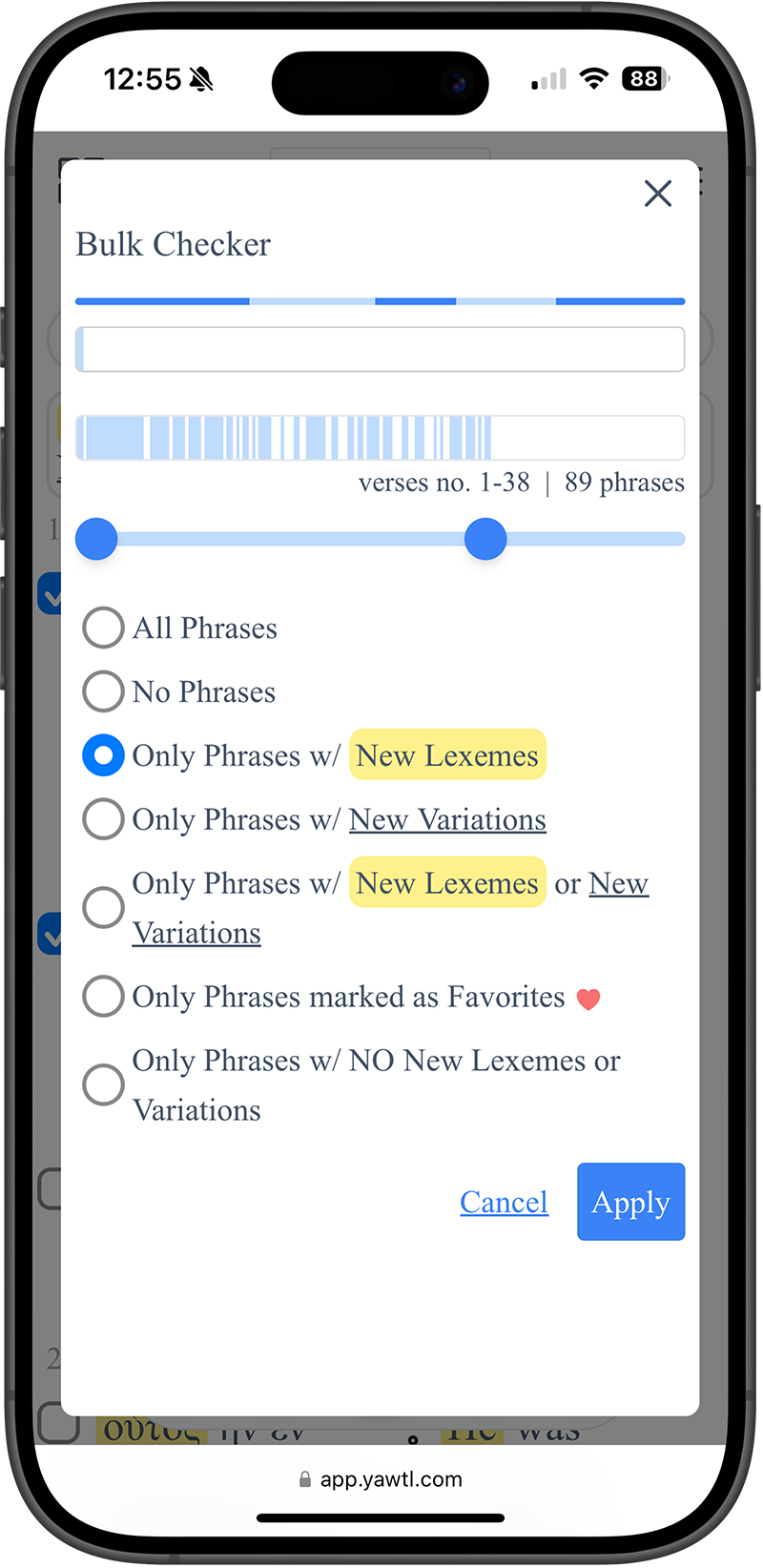
New-Word Highlighting
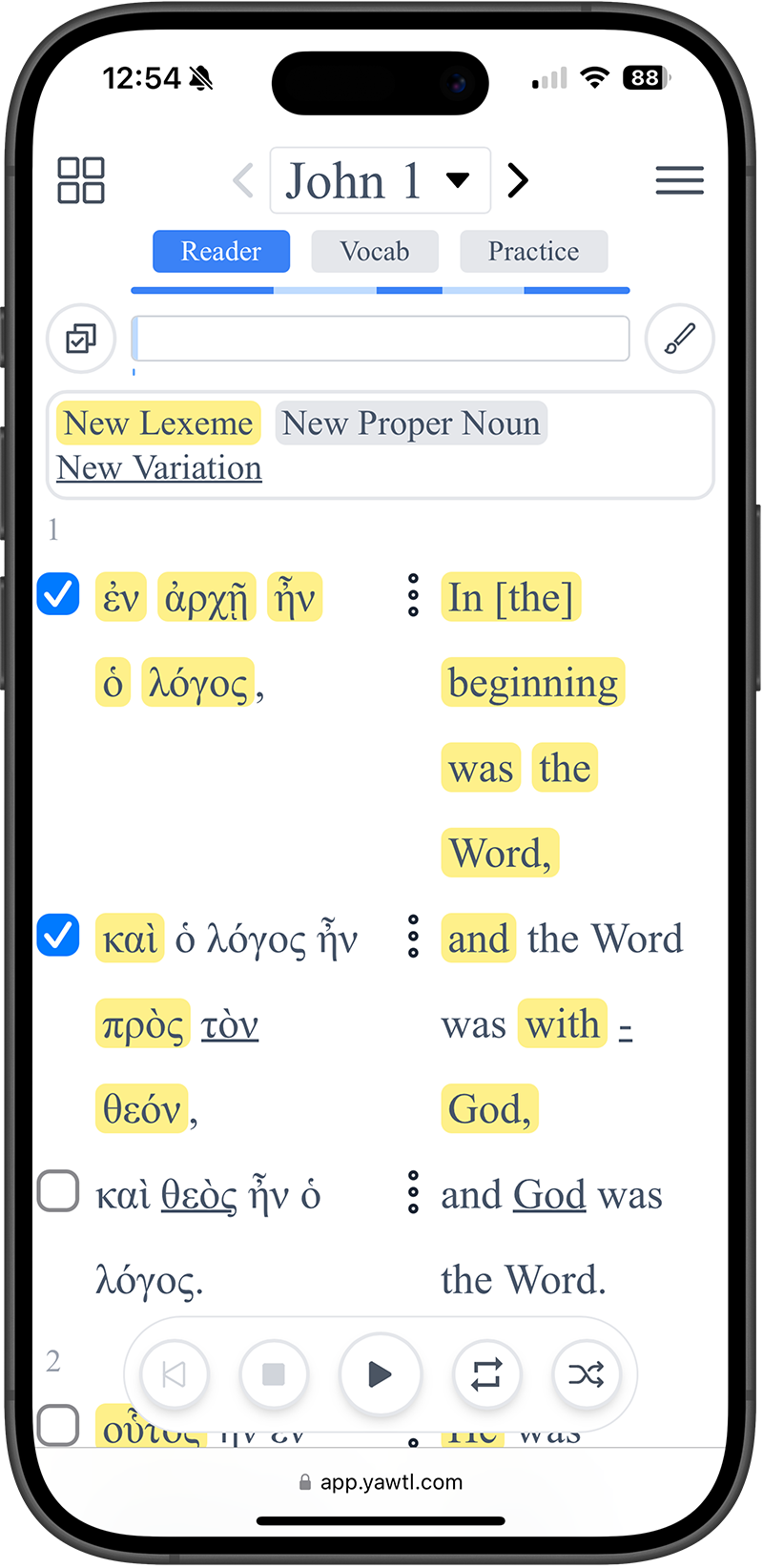
Study Individual Vocabulary Words
The vocab tab for each chapter displays all the new lexemes and new variations. If you want to focus on studying or listening to just these words, you can do so just like you can with the phrases. They can be played in sequence when checked, you can play them individually and favorite them!

Practice New Phrases w/ Words You Know
Each chapter has its own practice tab. The practice tab shows you phrases you haven't seen before, but with words you have seen and should know. Seeing known words in an unfamiliar context is a great way to reinforce and solidify your learning.
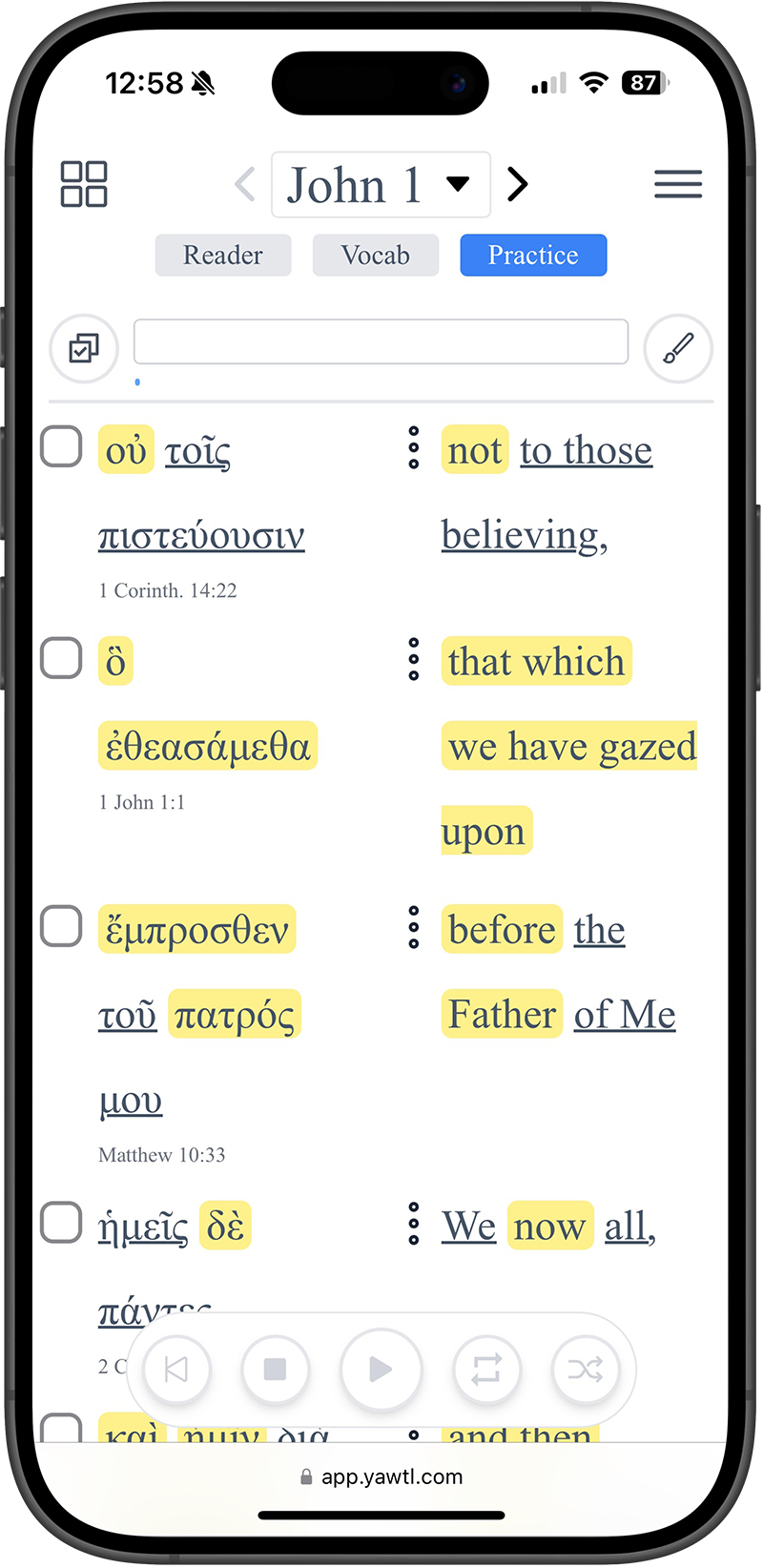
Highlighted Nouns
Most languages conjugate verbs. But Ancient Greek also conjugates nouns - these variations in a noun are called declensions. Each noun has a case (nominative, genitive, dative, accusative), gender (male, female), and quantity (singular, plural). Yawtl uses visual markings to help you identify what kind of noun you're looking at. Prepositions don't have a case of themselves, but often play a role in determining the case of the noun that follows it. Yawtl's preposition highlighting helps you identify the case(s) that can possibly follow that preposition.
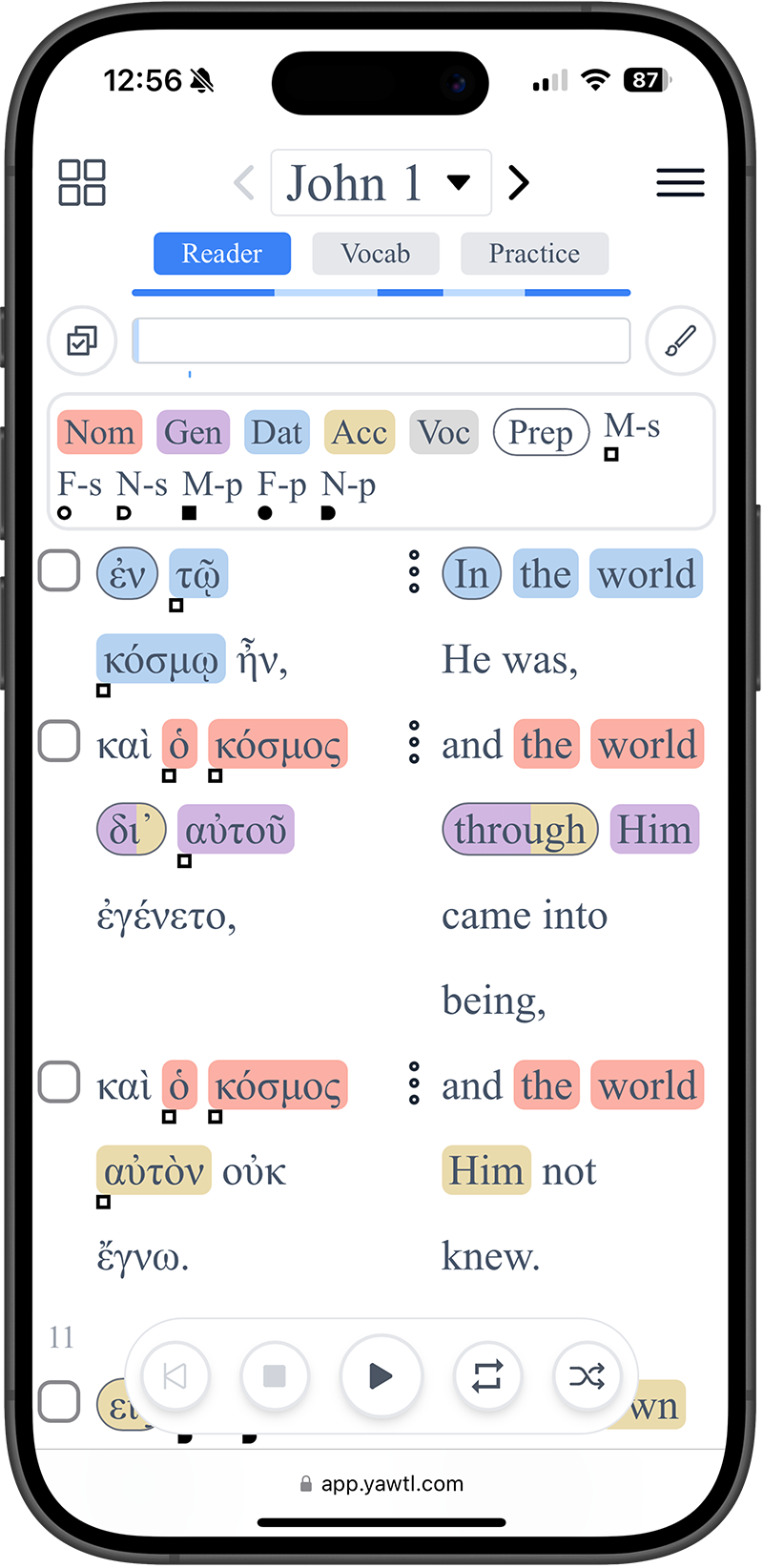
Brief Contextual Help
The values in the color key are all click-able. Click a value in the key to get a brief contextual help like this one. If you need a brief reminder of what the dative case is, for example, just click the dative item in the key!
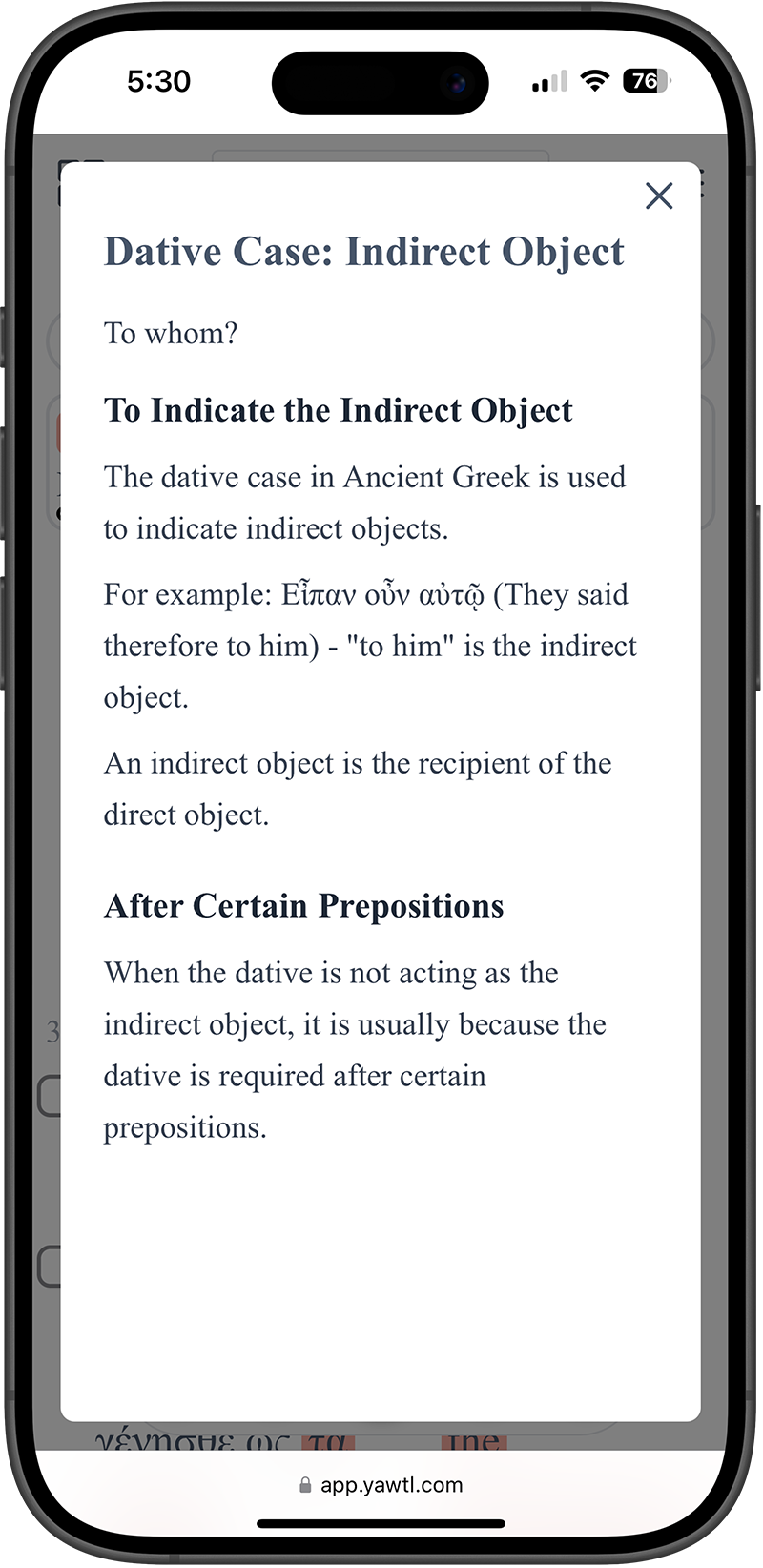
Preposition Tool
Use the preposition tool to study which noun case can follow each preposition. Prepositions are color coded by case in proportion to the percentage of time they are followed by a noun of that case. The preposition tool is available by clicking the preposition item in the key.
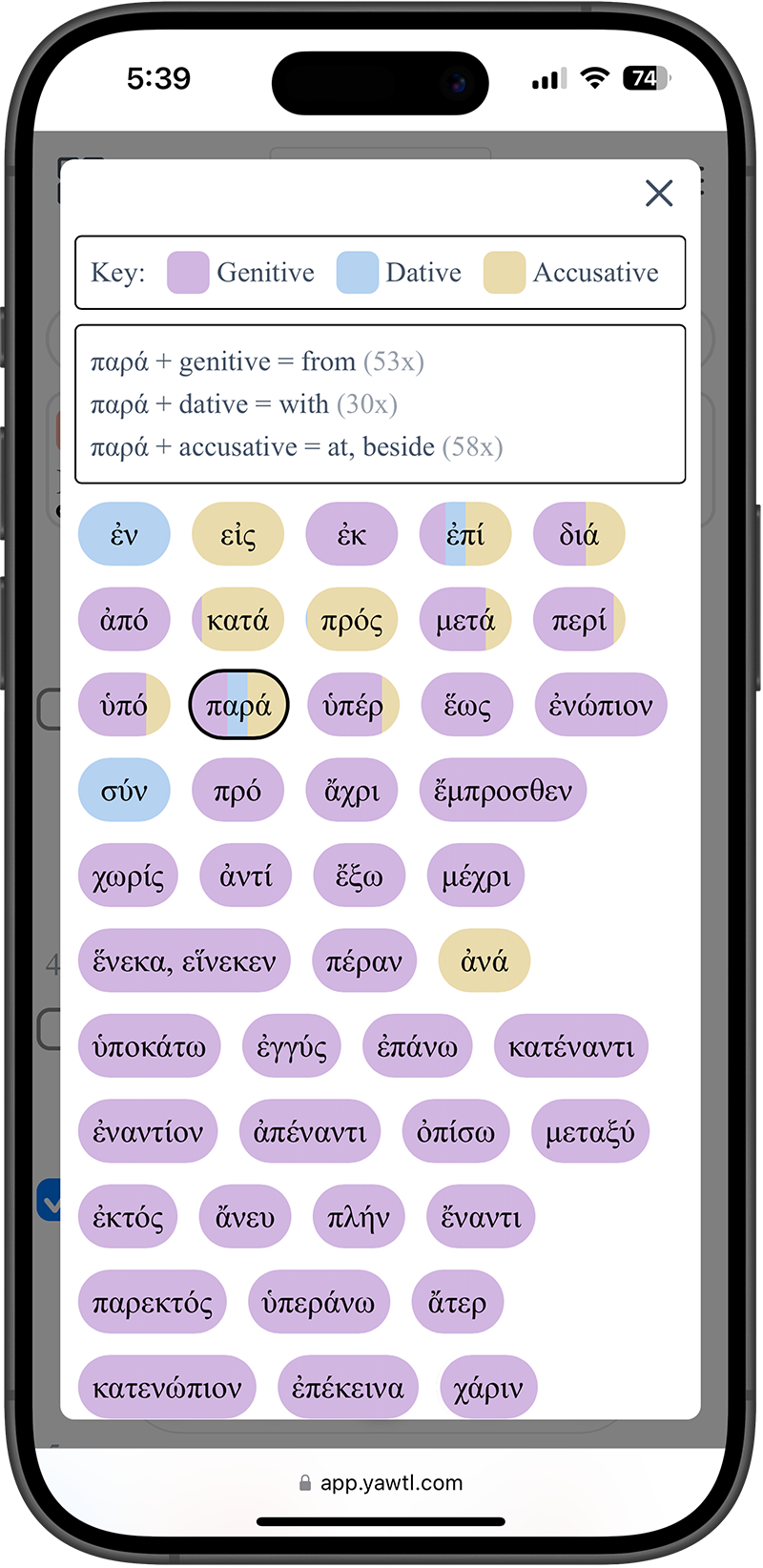
Highlighted Verbs
Each verb in Ancient Greek has a tense (present, past, future, etc.), voice (active, passive, etc.), and mood (indicative, subjunctive, etc.). There are actually about 99 different combinations of tense, voice and mood in the Ancient Greek New Testament. The good news is that five of those combinations account for about 50% of all verbs. Yawtl uses visual markings to help you see what form of verb you're looking at.
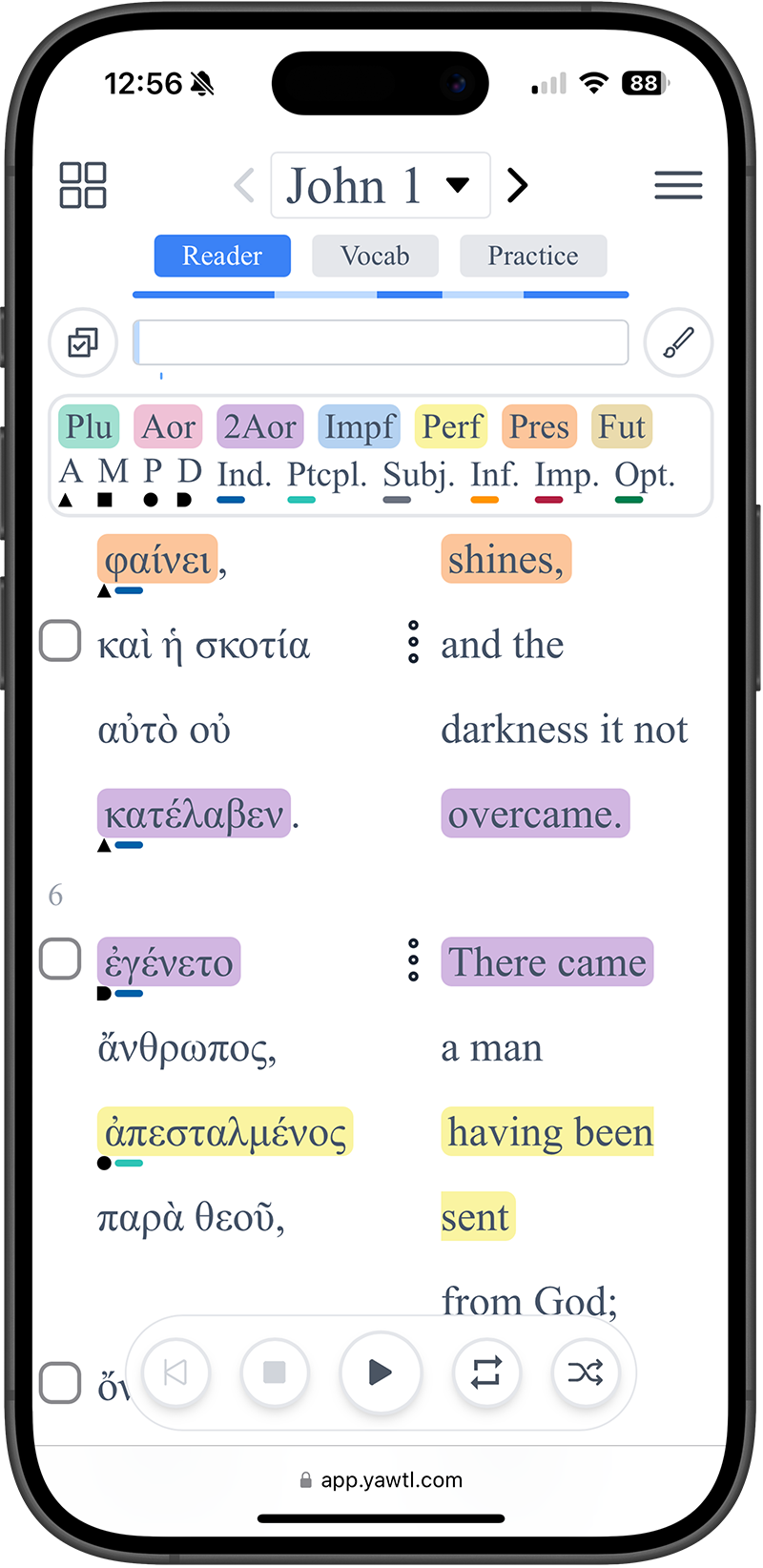
Verb Explorer
There are 99 combinations of tense, voice, and mood in the New Testament. But just five of them make up about 50% of all verbs. So you want to focus on the most common verb forms. Use the slider at the top of the explorer to expose the most common forms. Select a verb form, and see examples of all the different types.
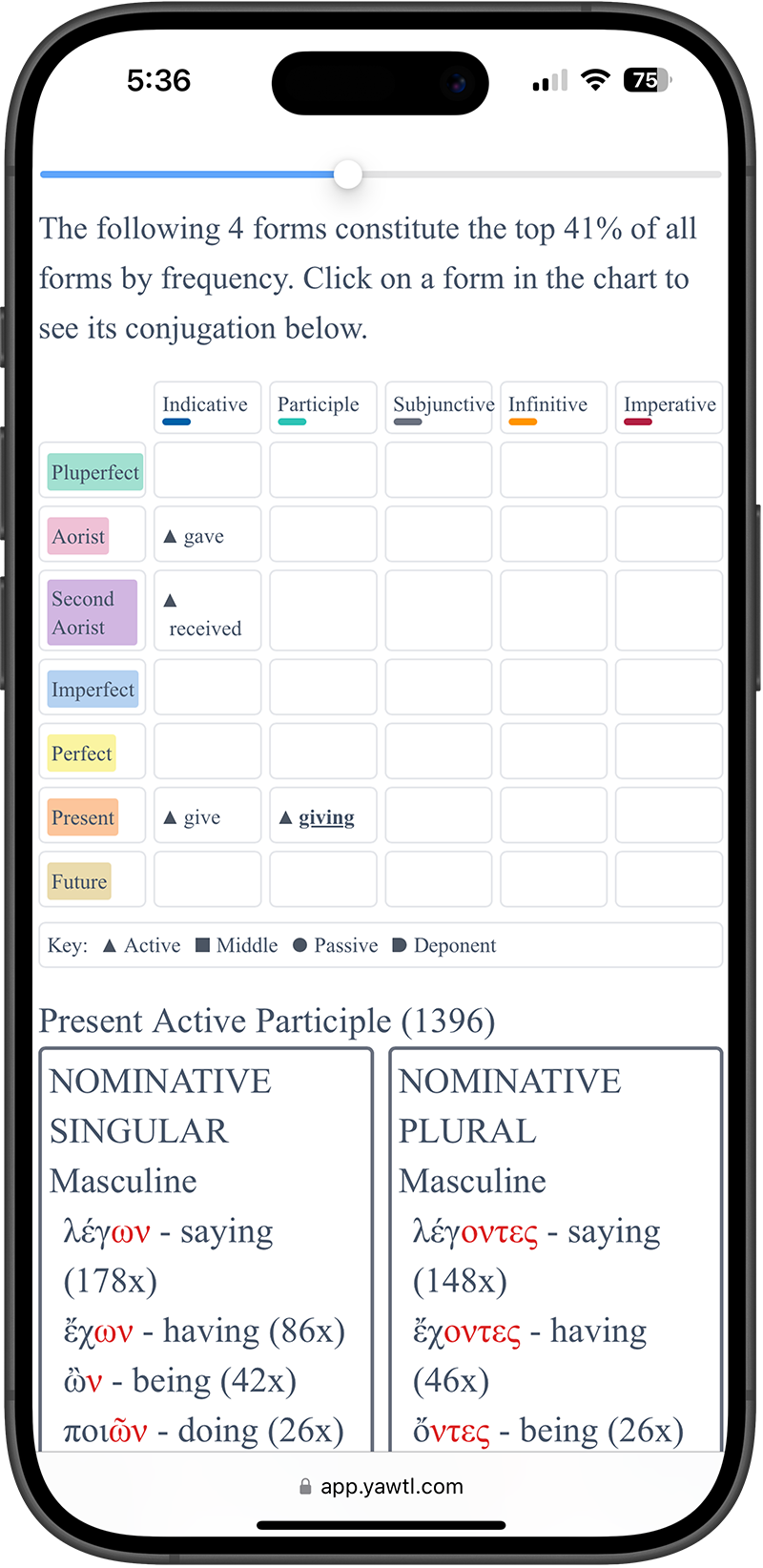
Track Your Chapter Progress
The track helps you see where you are in relation to important chapter characteristics. The first line at the top of the track (alternating dark and light blue) shows where section headings are. The next line (red dots) shows phrases marked as favorites. The third line shows checked phrases as blue vertical lines. The fourth line shows your scroll position in the chapter with a blue dot.
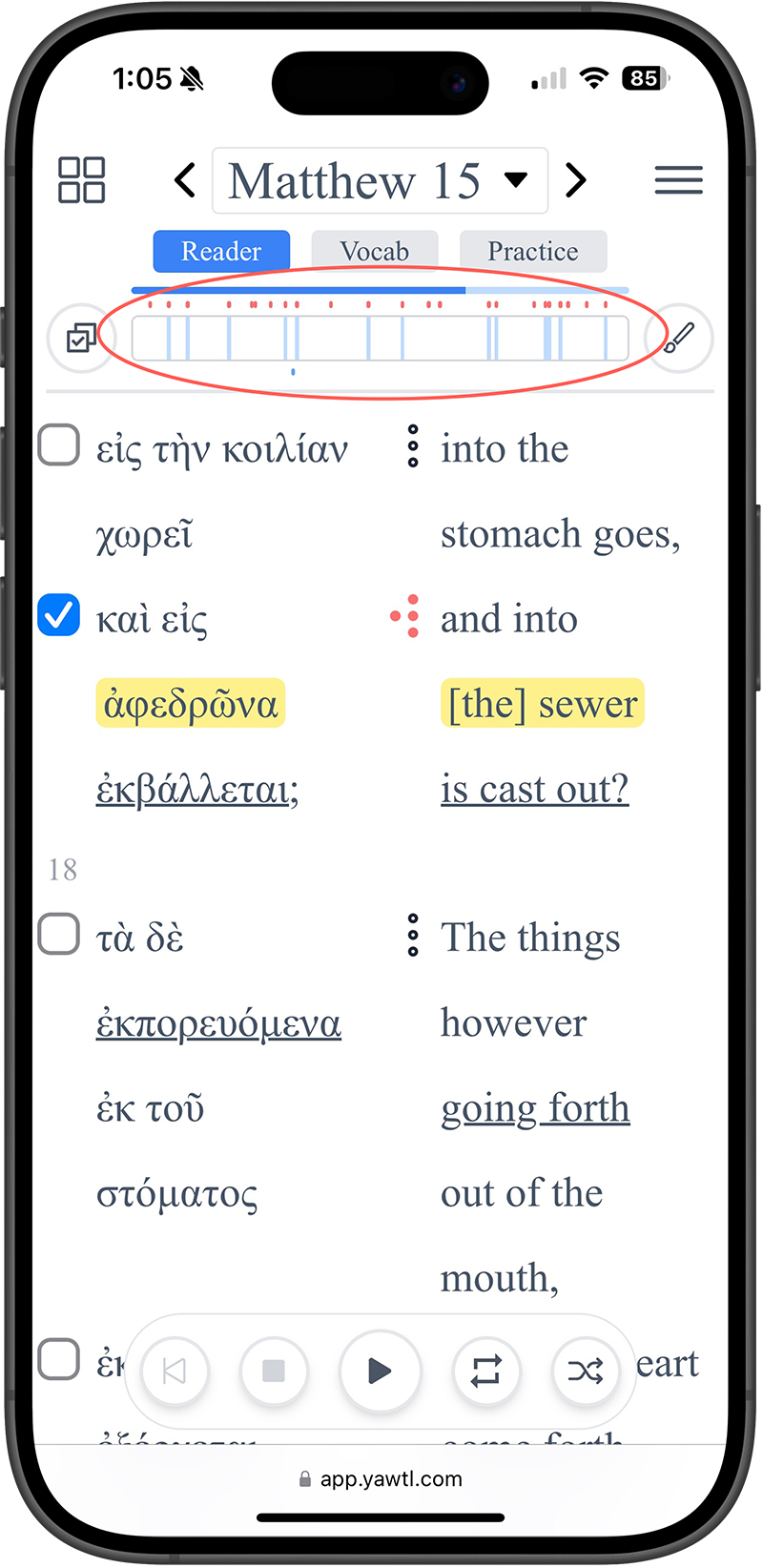
Track Your Progress Across Chapters
Red dots under the chapter number indicate how many "favorites" you have in that chapter. Each dot represents up to 5 favorites. If you use your favorites to indicate phrases you need to review more often, the chapter view helps you see where you might want to focus your efforts.
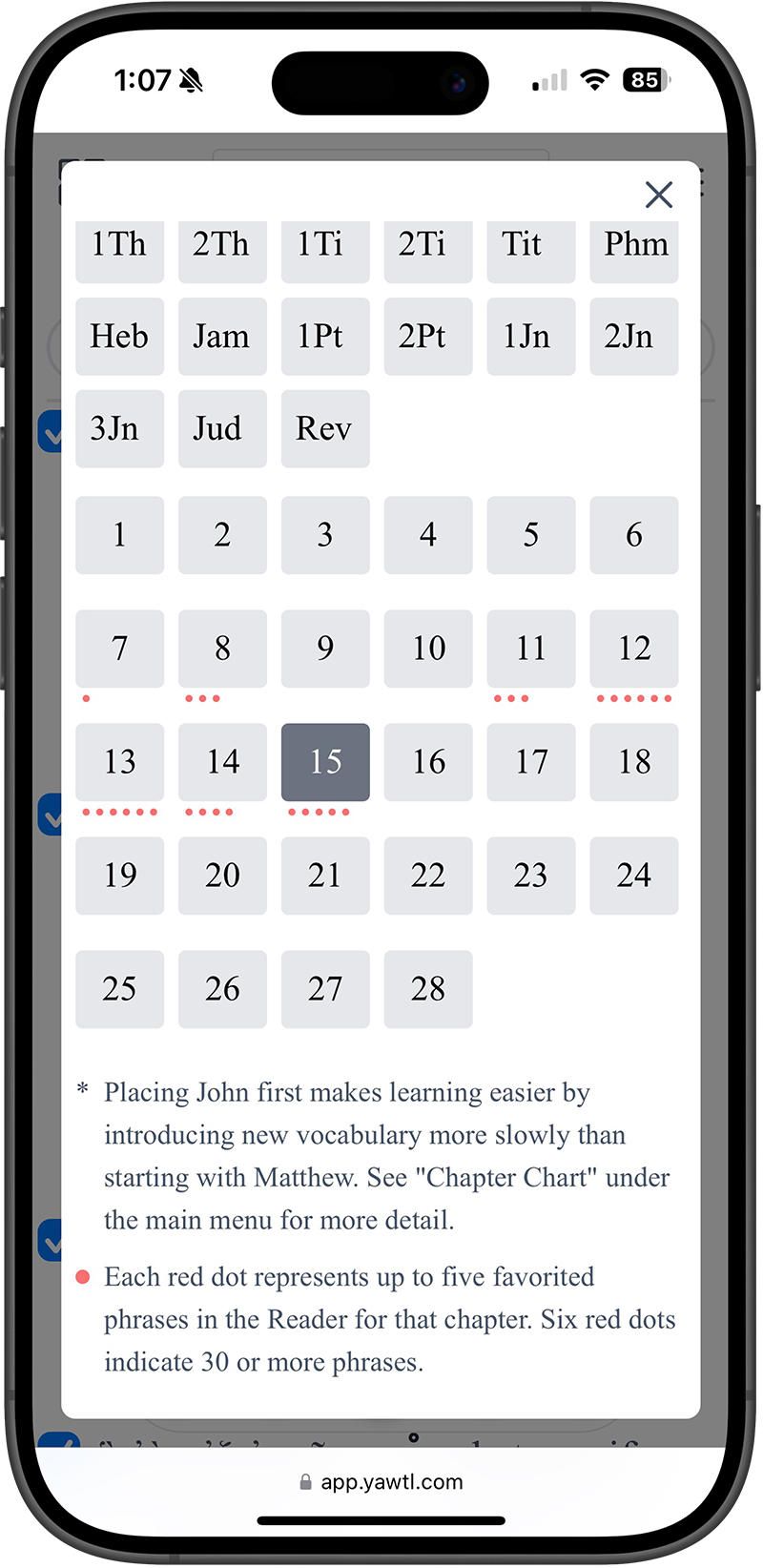
New Lexeme Density
Yawtl starts in John because John generally introduces new words more slowly than any other starting point.* Like all starting points, it introduces a lot of new words in the first two or three chapters, but unlike other starting points, the number of new words drops quickly and dramatically. Yawtl's New Lexeme Density chart shows you the number of new lexemes (yellow highlights) per 300-word segment starting in John 1 through to the last book in Revelation. This helps you set expectations of how difficult a section of text might be to master. It's meant to give you some encouragement ... yes, it's tough at the beginning, but stick it out! It very quickly becomes fun to see how many words you know!
The chart also shows in red how many new words you'd be introduced to if you started with the Gospel of Matthew. This illustrates why we start with John.
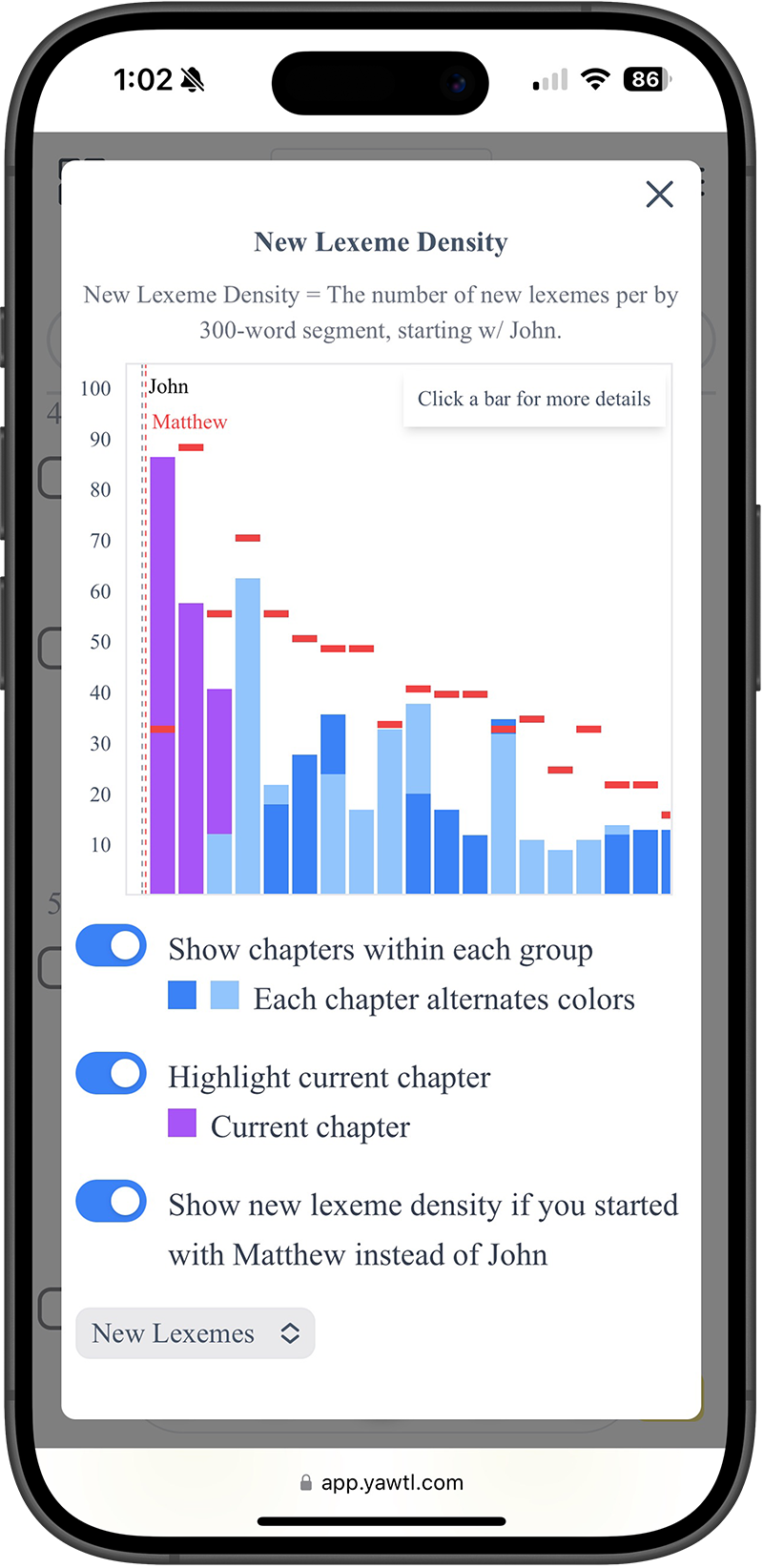
Explore: Other Instances of the Selected Word
Click on any word to open the Explorer pop-up menu. There are four tabs.
The first tab - Verse - lets you explore the previous and future verses that contain the selected lexeme or variation. This is especially helpful when you see a word that is neither a new lexeme or a new variation, but you don't remember seeing it before. The verse explorer lets you go back to previous instances where you've seen this lexeme or variation and jog your memory.
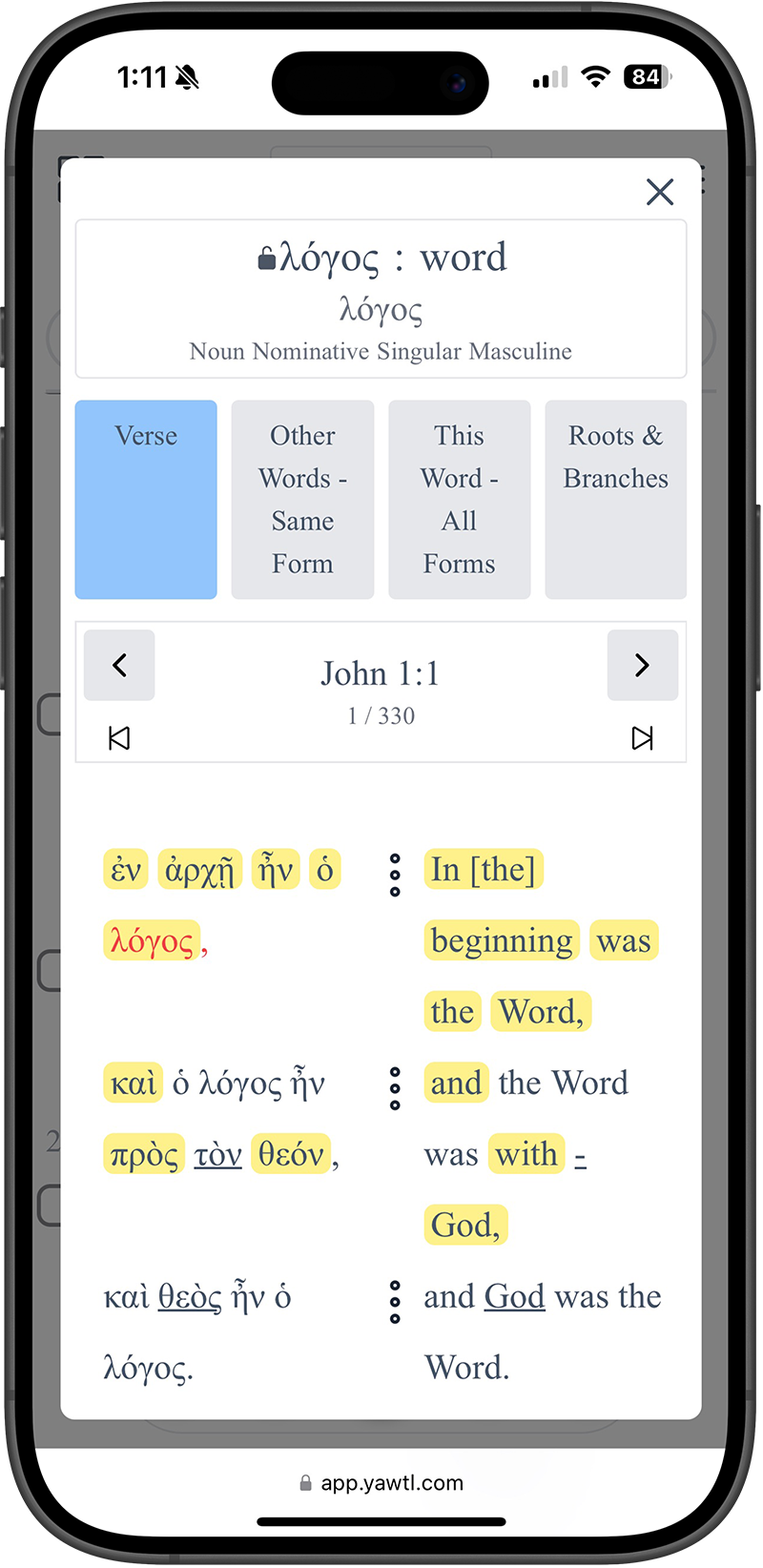
Explore: Other Words, Same Form
There is a lot of variation in how verbs and nouns of the same form are conjugated. There are a lot of exceptions and irregularities between two words' endings even though they are the exact same grammatical form or paradigm. When you look at other words of the same form, you're looking to see how regular this form's pattern is, and whether the word you're currently exploring conforms or diverges from that pattern.
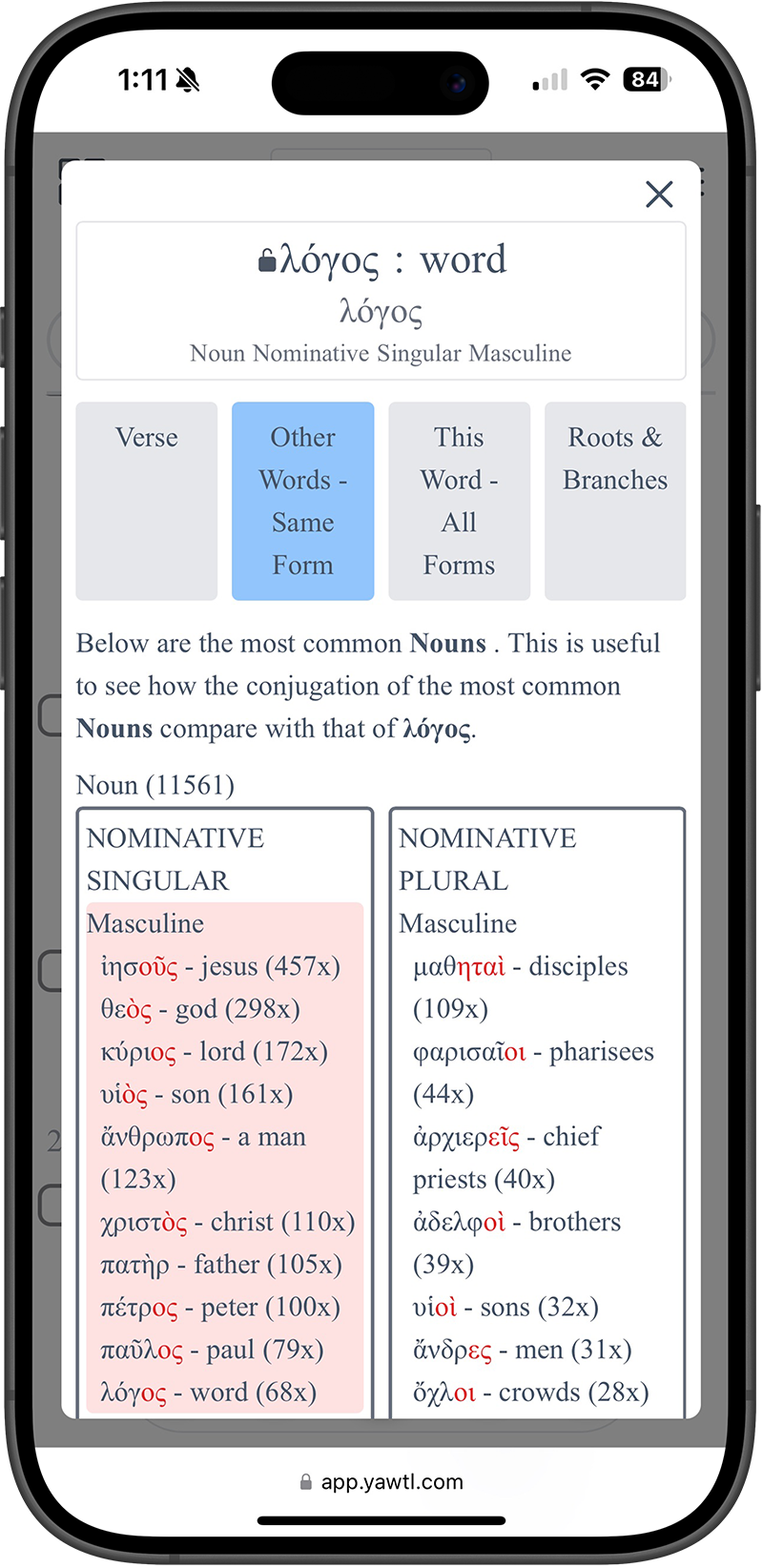
Explore: This Word, All Forms
Sometimes it's helpful to see all the different ways the selected word is conjugated across all the different forms.
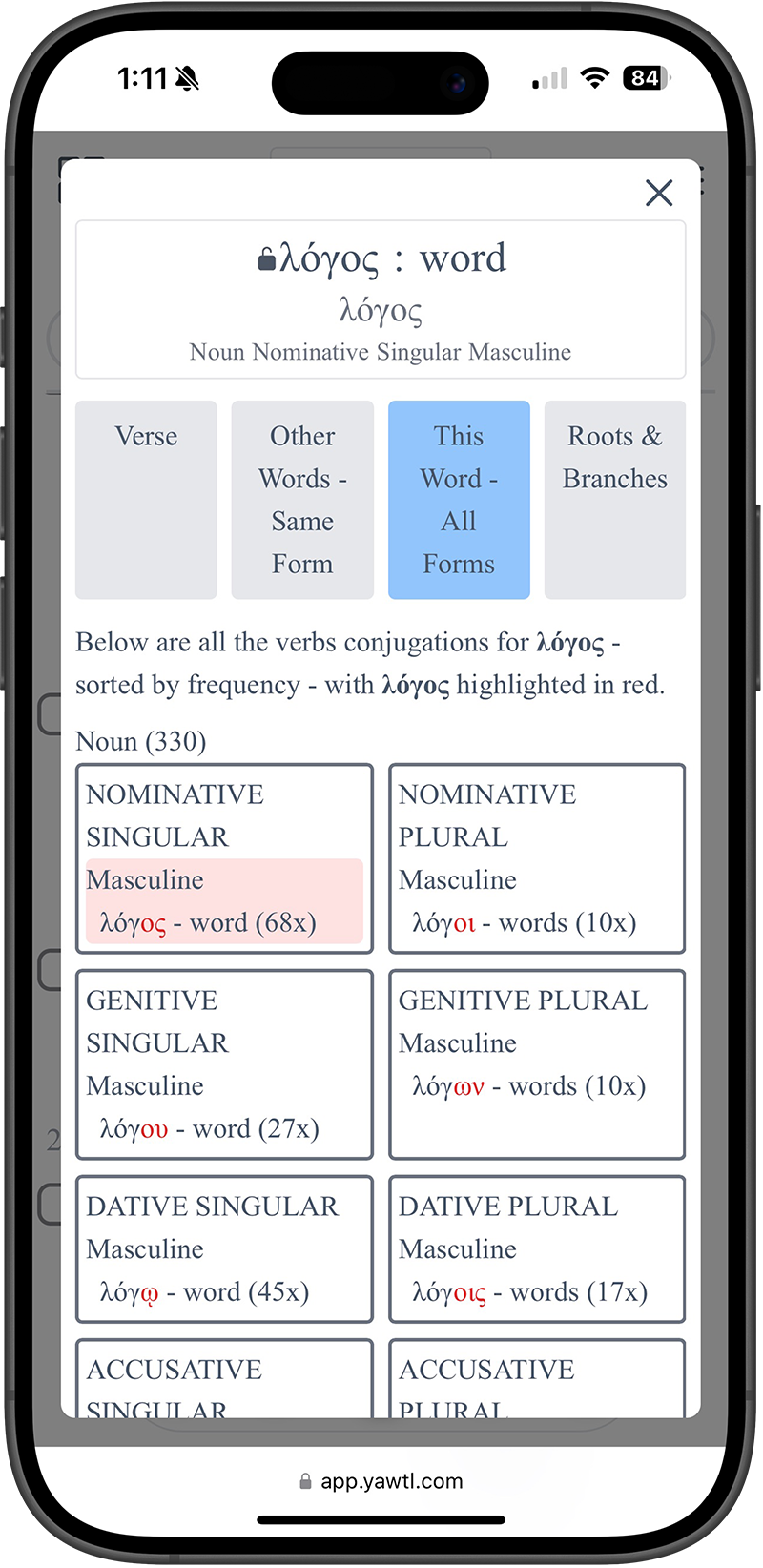
Explore: Roots and Branches
There are a lot of words that you've never seen before, but are realated to or composed of words that you already know. This tab shows you the etymological roots or pieces of a word, shows you where you first learned those roots, and how often those root are used generally. When you notice how many words are made up of other words, it's much easier to learn vocabulary quickly.
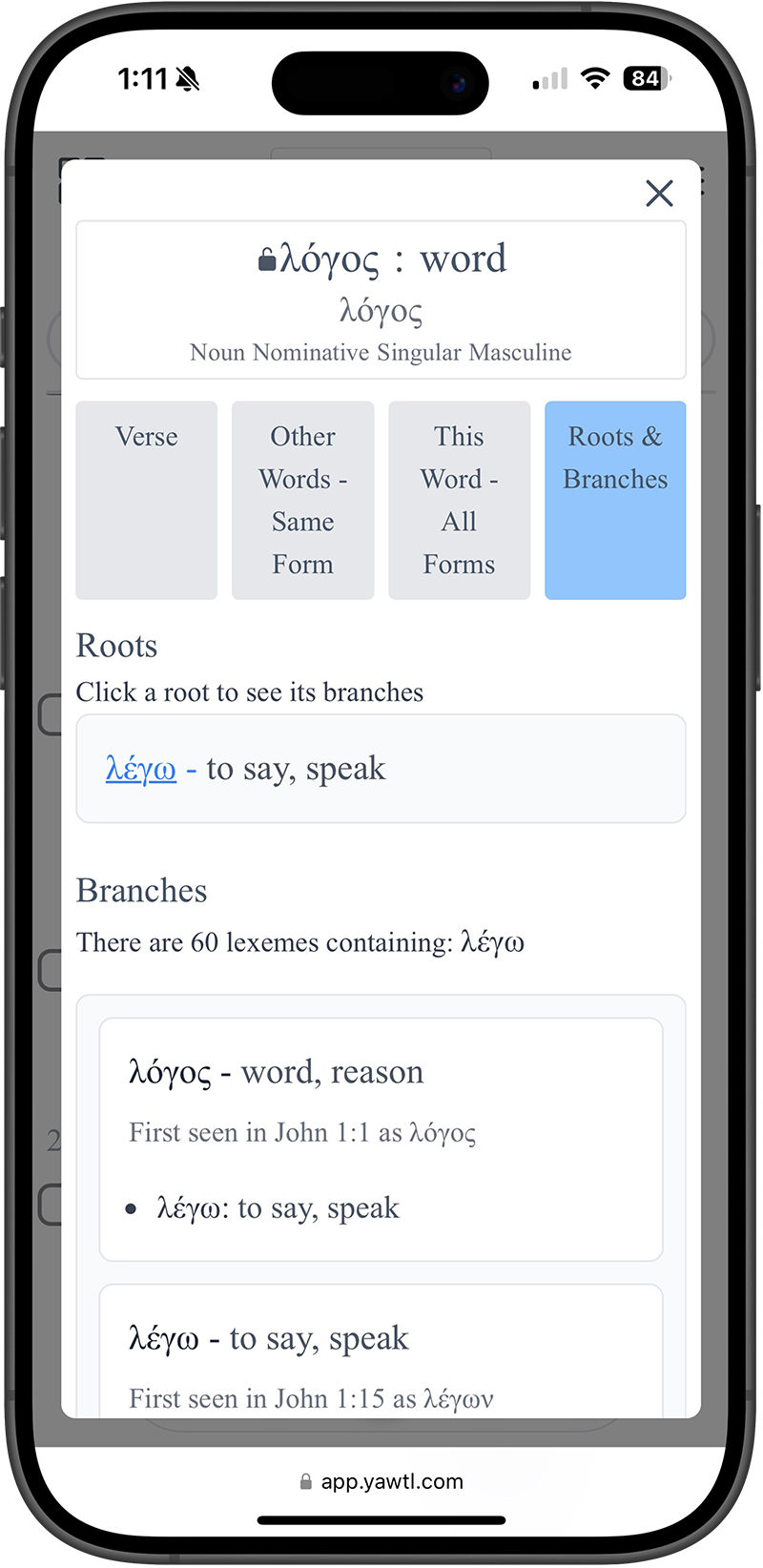
Step one: Learn how to say things out loud. Yawtl uses modern Greek pronunciation. You should too. 😉
Prioritize reading out loud as your main learning strategy. Repeat a small number of phrases until you can fluently read and understand them without assistance. Then move on. 🔥
When you're driving, doing chores, or resting, listen to phrases and repeat what you hear. The ease with which you progress in your reading will increase as you read. 🚀
Get familiar with grammar naturally by reading. If you want to dive deeper later, it will come effortlessly. ⚡
Start with The Gospel of John—it introduces new words gradually. Then move through the New Testament in order.
Vocabulary is best learned in context. Focus on phrases, not just isolated words.
Ancient Greek is an elephant... a massive one. Eat it one bite at a time. Keep pushing forward. Every phrase you learn is another step closer to fluency! 💪